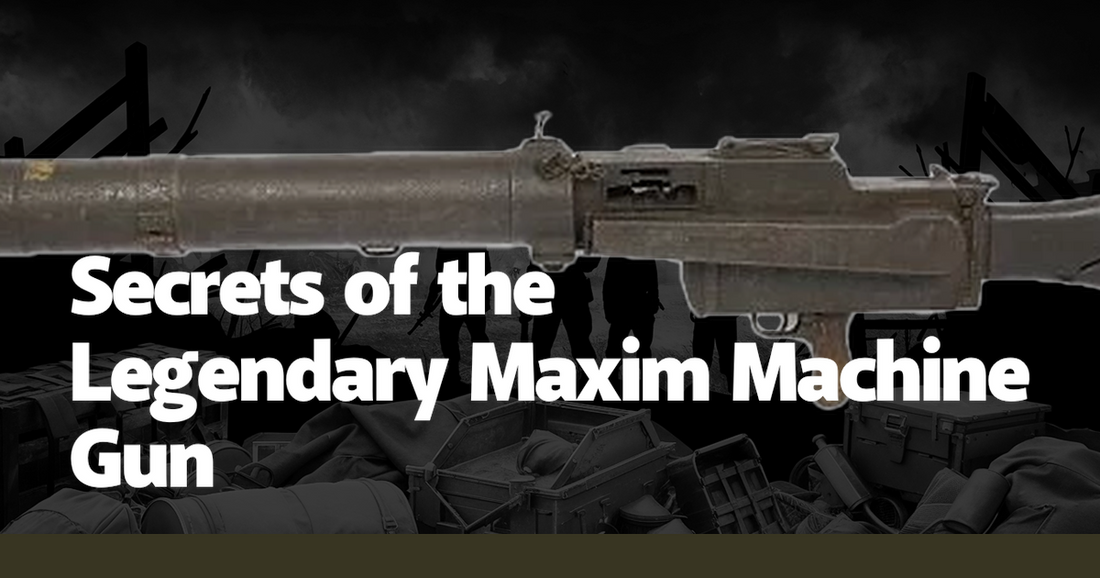The Maxim machine gun, often hailed as the first true automatic weapon, revolutionized warfare in a way that few inventions have. Designed by Hiram Maxim in 1884, this formidable piece of machinery harnessed the energy from its own recoil to eject spent cartridges and chamber new ones, allowing it to fire continuously as long as the trigger was held down. The simplicity and efficiency of its mechanism were groundbreaking. Before the Maxim, the firepower of armies was largely limited by the rate at which soldiers could manually load and fire their rifles. The introduction of the Maxim gun changed this dynamic completely, enabling a single operator to unleash a torrent of bullets that could decimate advancing troops.
The impact of the Maxim machine gun was first felt during colonial conflicts, where European powers sought to expand their empires. One of the most infamous examples occurred during the Battle of Omdurman in 1898. British forces, equipped with Maxim guns, faced off against Sudanese warriors armed with spears, swords, and outdated rifles. The result was a massacre; the Maxim guns mowed down waves of attackers, demonstrating the brutal efficiency of modern firepower. This battle underscored the disparity between industrialized nations and those still reliant on traditional forms of combat, and it highlighted the devastating potential of automatic weapons in warfare.
The Maxim gun's design was both ingenious and robust. It featured a water-cooled barrel, which allowed it to sustain long periods of continuous fire without overheating—a significant advantage over earlier machine guns that were prone to jamming and barrel warping. The gun's mechanism was powered by the force of its own recoil, a clever use of physics that eliminated the need for external power sources or manual operation. This self-sustaining cycle of fire made the Maxim gun not only more reliable but also easier to operate under the chaotic conditions of battle.
However, the true test of the Maxim gun came during World War I, where it was deployed on a massive scale. Trench warfare, with its static lines and massed infantry assaults, provided the perfect environment for the Maxim to demonstrate its lethality. Machine gun nests became the bane of infantrymen, capable of cutting down entire platoons in minutes. The psychological impact was profound; soldiers on both sides were acutely aware of the deadly efficiency of these weapons. The chilling rattle of a Maxim gun became synonymous with the horrors of the Western Front, where it played a pivotal role in shaping the tactics and outcomes of numerous battles.
Despite its fearsome reputation, the Maxim machine gun also had its limitations. The water-cooling system, while effective, required a constant supply of water, which could be a logistical challenge in the heat of battle. Additionally, the gun was relatively heavy and cumbersome, necessitating a crew to transport and operate it. These factors made it less ideal for highly mobile operations, where lighter, air-cooled machine guns like the Lewis gun began to find favor. Nevertheless, the Maxim's reliability and firepower ensured that it remained a staple of military arsenals well into the 20th century.
The legacy of the Maxim machine gun extends beyond its immediate impact on the battlefield. It set the stage for the development of subsequent automatic weapons, influencing designs for decades to come. The principles of recoil operation and sustained fire that Hiram Maxim pioneered can be seen in many modern machine guns. The Maxim also prompted a reevaluation of military tactics and strategy, as armies had to adapt to the new reality of machine gun warfare. The emphasis shifted towards combined arms tactics, where infantry, artillery, and armor worked in concert to overcome the deadly firepower of machine guns.
The human stories behind the Maxim machine gun add another layer of intrigue. Hiram Maxim himself was a fascinating character—a prolific inventor with a flair for showmanship. He famously demonstrated his gun to potential buyers by inviting them to fire it, then revealing that it had been firing continuously for hours without a single malfunction. His invention brought him fame and fortune, but it also earned him a place in the annals of military history as the man who changed the face of warfare. On the battlefield, soldiers who operated the Maxim guns developed a deep respect for their reliability and power, often forming close-knit crews that worked together to maximize the gun's effectiveness.
In the annals of military history, the Maxim machine gun stands as a symbol of the transformative power of technology in warfare. Its introduction marked the beginning of an era where firepower and industrial efficiency became the defining characteristics of military might. The lessons learned from its deployment continue to resonate in modern military doctrine, underscoring the importance of innovation and adaptation in the face of evolving threats. As we look back on the legacy of the Maxim gun, we are reminded of the profound impact that a single invention can have on the course of history, reshaping the way wars are fought and won.

